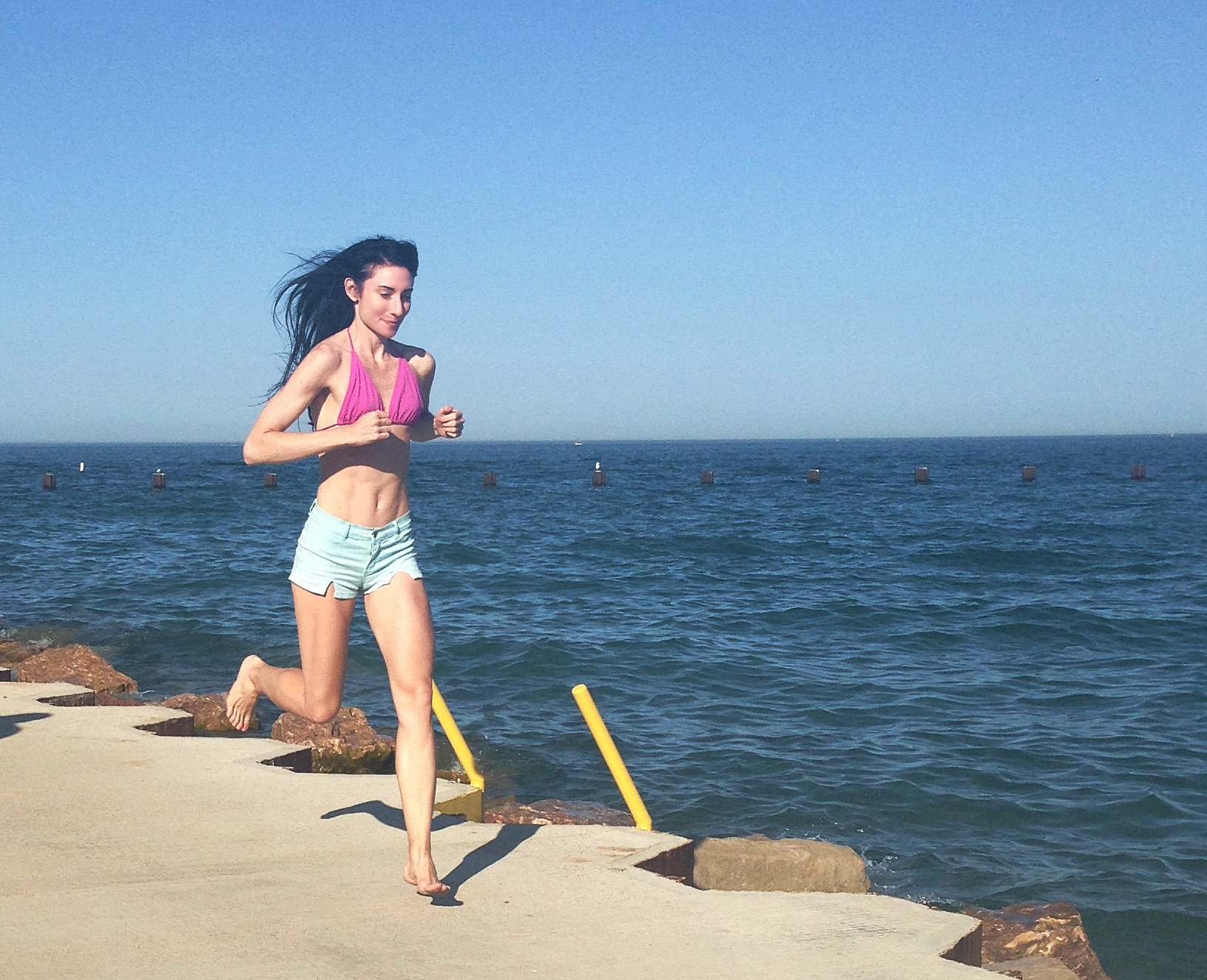Research offers some promising leads on how to begin running in ways that are more economical and safe.

How to Begin Running
Moore et al. 2013 found that barefoot running resulted in the most economical running form as compared with shod running (i.e. running in shoes), suggesting that runners learn the proper forefoot running technique more proficiently when running barefoot.
The researchers investigated the effects of barefoot running on running economy in habitually shod runners and found that barefoot running significantly improved running economy.
How Barefoot Running Saves Energy
The researchers found that the barefoot runners had no greater pre-activity in the lower leg muscles than the shod runners, suggesting that eliminating shoe cushioning does not increase anticipatory muscular cushioning activity. Thus, the possibility of leg fatigue is no greater in barefoot running as compared with running in shoes. This also implies that in order to keep impact low, barefoot runners utilize a forefoot strike landing, instead of a heel strike landing, to compensate for the absent shoe cushioning.
Another big performance factor was that barefoot running reduced stride length whereby the most economical runners in the world have a significantly shorter stride length as compared with most recreational runners.
How Barefoot Running Prevents Injury
As for injury prevention, the researchers found that barefoot running led to a more stable foot placement.
- The barefoot runners had reduced pronation as well as increased co-activity of the tibialis anterior and the calves which resulted in a more stable position of the subtalar joint and ankle at touchdown and during stance.
Why Not Begin Running in Shoes?
Most shod runners often have trouble staying injury free, this is because cushioned running shoes prompt us to land on our heels. Yet, in the past, many experts believed that cushioned running shoes were key to helping runners overcome injury, but newer reports show the opposite.
Now research is showing that injuries are a constant possibility if a runner wears running shoes with cushioning, and of course, the health benefits of both barefoot running and minimalist shod running have been validated in a series of many other studies. To that end, the best approach to begin running is by alternating between running barefoot and running in barefoot like shoes to ensure long-term lower extremity strength because it increases proprioceptive input which is needed to stimulate the muscles and soft tissues of the foot.
Because most of us have very weak feet, discomfort is expected in the beginning stages of barefoot running, but continually refraining from cushioned running shoes will offer immediate rewards, and you will move toward injury free running.
More From Run Forefoot:
- Stop Wearing Athletic Footwear with Heel Cushioning when Forefoot Running
- Forefoot Running Got You Frustrated?
- What About Switching to a Midfoot Strike?
- Heel Strike Running is Like Engine Braking – It Slows You Down
References:
Moore IS., Jones A and Dixon S. The persuit of improved running performance: can changes in cushioning and proprioception influence running economy and injury risk? Footwear Sci, 2013;5 S61To-S62.
Bretta Riches
BSc Neurobiology; MSc Biomechanics candidate, ultra minimalist runner & founder of RunForefoot. I was a heel striker, always injured. I was inspired by the great Tirunesh Dibaba to try forefoot running. Now, I'm injury free. This is why I launched Run Forefoot, to advocate the health & performance benefits of forefoot running and to raise awareness on the dangers of heel striking, because the world needs to know.
Latest posts by Bretta Riches (see all)
- Can You Run In Barefoot Shoes? Yes, But DON’T Heel Strike! - 21/07/2024
- Why Cushioned Running Shoes Are Really Bad for Your Feet - 19/07/2024
- Do Cushioned Running Shoes Cause Injuries? - 17/07/2024

Leave a Reply